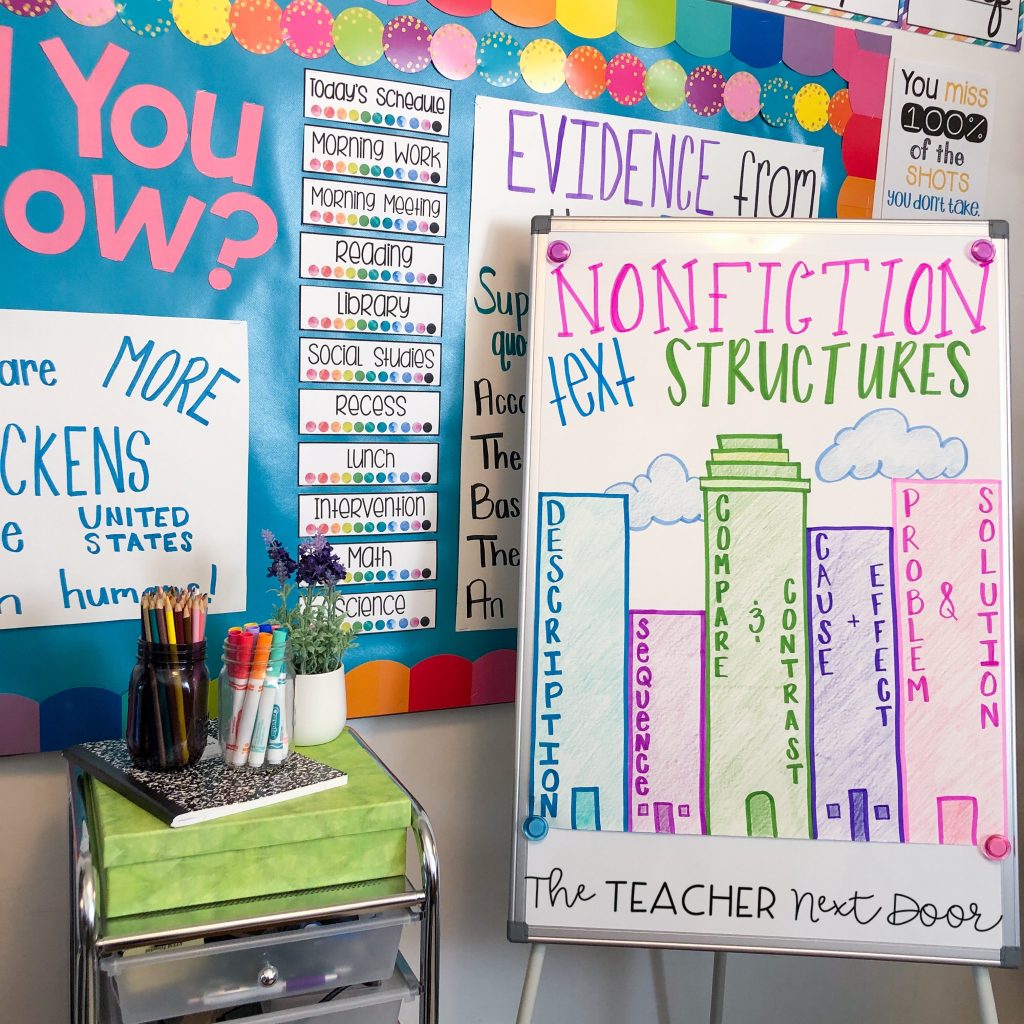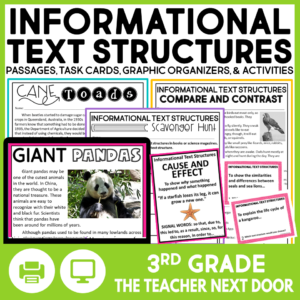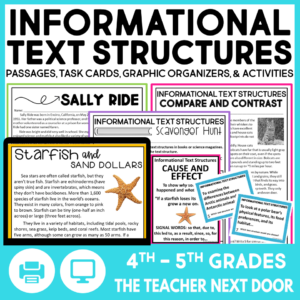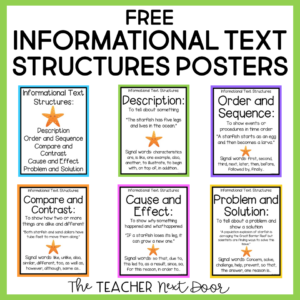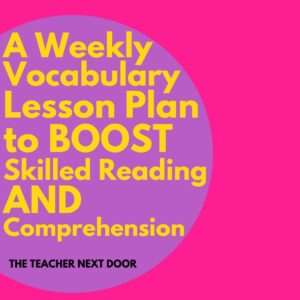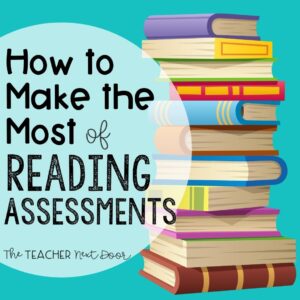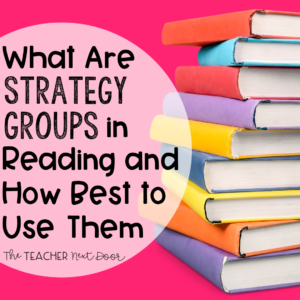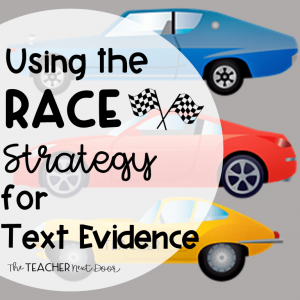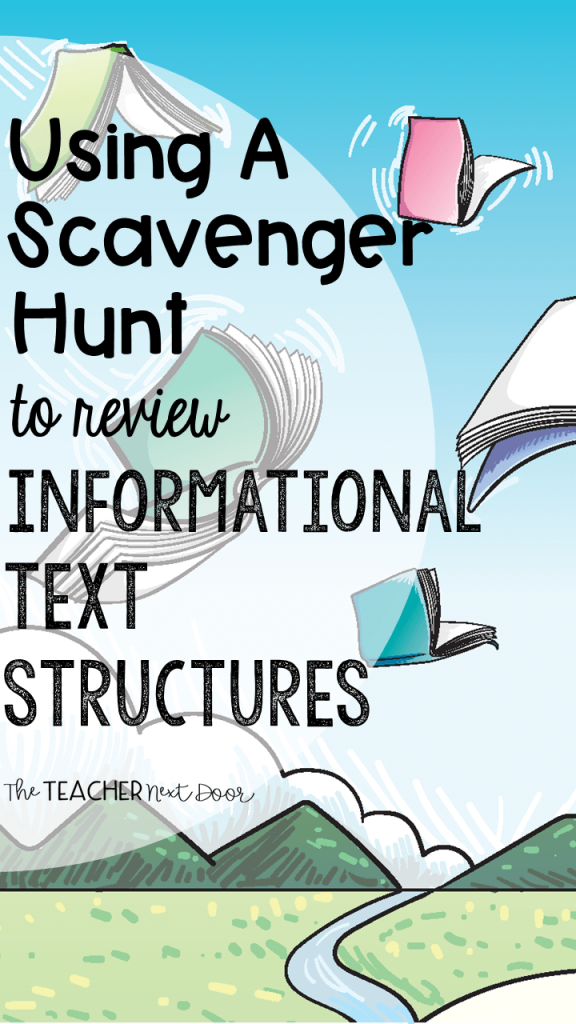
One of my favorite ways to review Informational Text Structures with upper elementary kids is to organize a text structure scavenger hunt!
First, I teach each of the five text structures:
1. Description
2. Order and Sequence
3. Cause and Effect
4. Compare and Contrast
5. Problem and Solution
After I’ve taught all five of the text structure types and students have had a chance to become more familiar with each text structure, it’s time to review.
A scavenger hunt is such a fun way to review the text structures and students really enjoy it too.

Here’s what I do:
1. Gather about 10-12 nonfiction books per basket.
You’ll want to make sure that there are a variety of text structures represented in each basket of books. If your classroom library doesn’t have enough books, you could check out more in your school or local library.
The number of baskets you fill will depend on the number of students you have and how many you’d like in each group. Ideally, a small group of three is perfect in my mind, since the fewer people per group means the more each child is able to participate.
2. Explain the activity to students.
I tell students that they’ll be going on a scavenger hunt using a basket of books.
Their goal is to work together to read the first page or two of each book to see how they think the informational text is organized.
Once they figure that out, they’ll record the name of the book (the source), the topic (one or two words, what it is about), and the text structure used. They’ll keep examining books until time is up or they’ve finished their whole basket.
You’ll also want to set behavior expectations like participation, voice level, what’s allowed and not allowed during that time. I usually tell them that if they’re done early that they can read one of the books in the baskets.
3. Put kids into small groups at desks or tables or on the floor and give each group a basket of books.
Make sure kids also have a copy of the handout, a pencil, and something to write on if they’re on the floor. I love using clipboards but whiteboards or even a large book would work.
4. Allow kids to find text structures for 15 – 25 minutes, depending upon your class.
If kids are completing the activity and doing well, you might want to consider saving their papers and keeping the books in the baskets. In a few days or the next week, you can pass out different baskets to each group and they can continue the activity.
Here’s the handout I use for this activity.
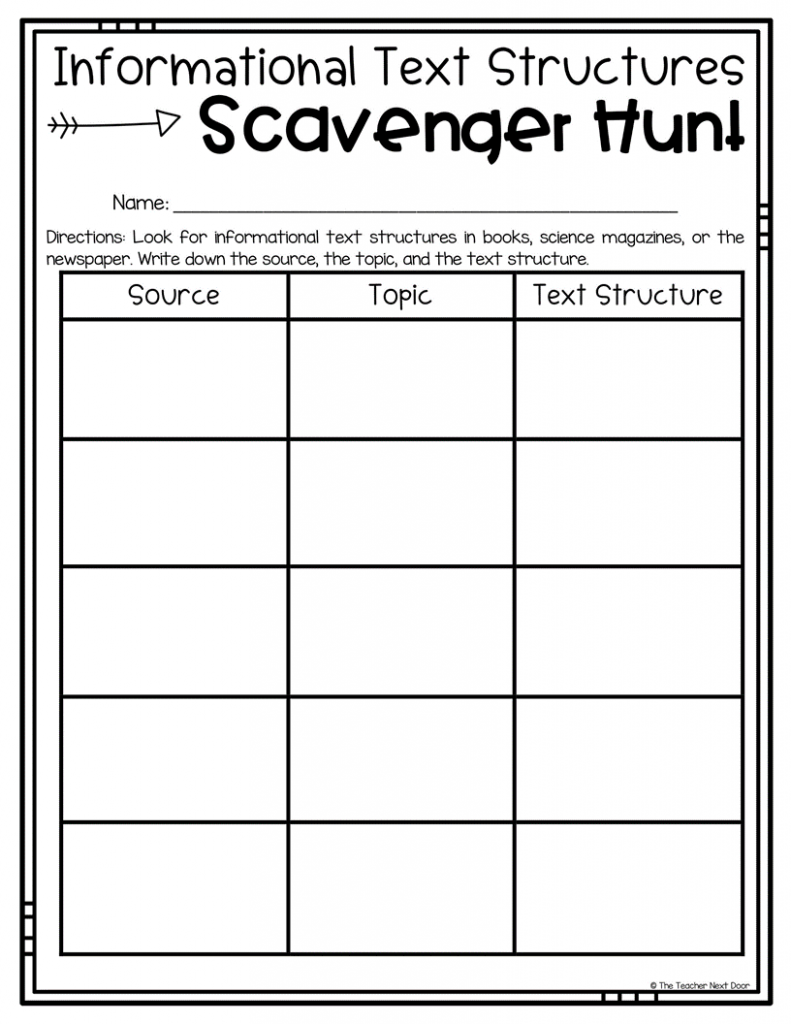
I actually do this activity as a review for the whole class but here are some ways you could also use the activity:
1. In Centers
2. For Test Prep
3. Like Scoot – Set Up Books Around the Room and Kids Walk Around Working in Pairs
4. One on One for Kids Who Need Extra Help (with a parent volunteer or an aide if possible)
If you’d like more teaching ideas for Informational Text Structures, you might like this post:
Mentor Texts for Text Structures
Looking for some low prep but super effective text structure materials to save you time? Here are two units I’ve created to teach text structures. They come in BOTH print and digital formats and include teaching passages for each type of text structure, independent passages, a set of 32 task cards, posters, a flipbook, graphic organizers, and writing activities!
Click here to see the units for 3rd Grade or 4th/5th Grades.
Want more paperless activities?
These digital reading units can be completed in Google Slides or PowerPoint. Every slide (except the reading passages) is interactive!
Click here to take a look at the 4th Grade Digital Informational Text Structures Reading Unit
Click here to take a look at the 5th Grade Digital Informational Text Structures Reading Unit
Here’s another FREEBIE you might like! These informational Text Structure Posters are also included in the complete units above! They’re a great way to help introduce each type of text structure and also to use as a visual reference reminder for your students.
Click Here to download the FREE Informational Text Structure Posters
Thanks so much for stopping by!


